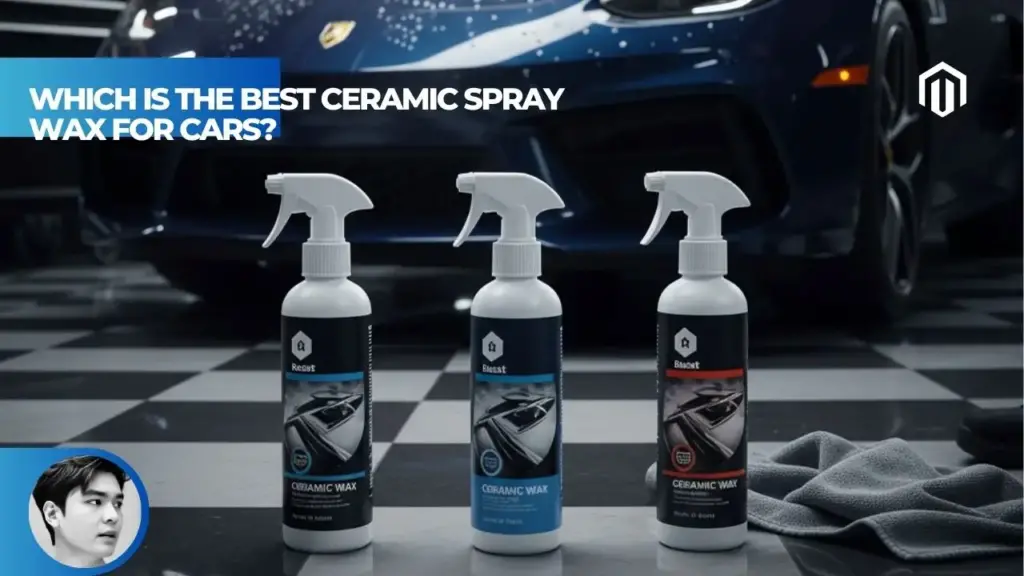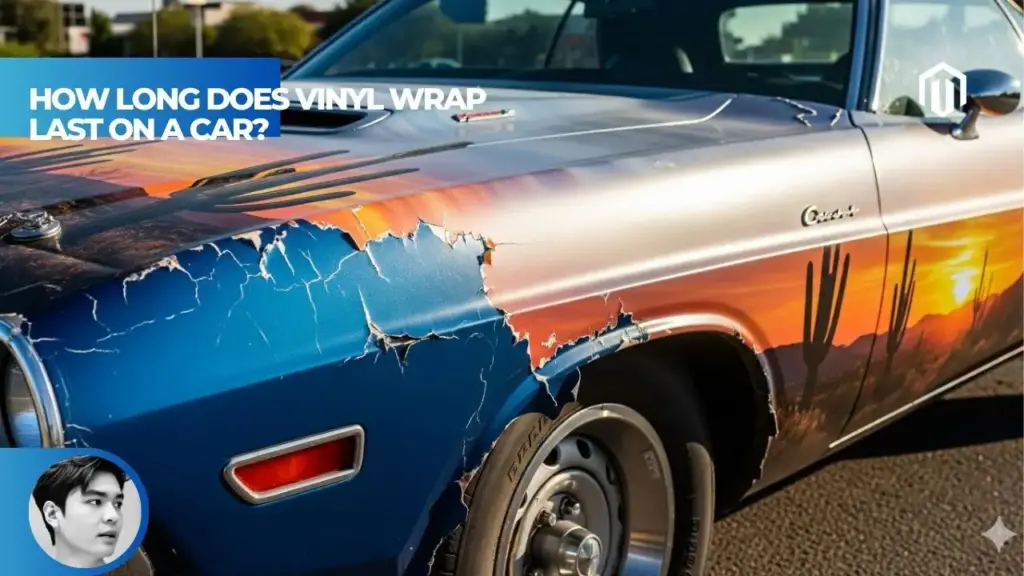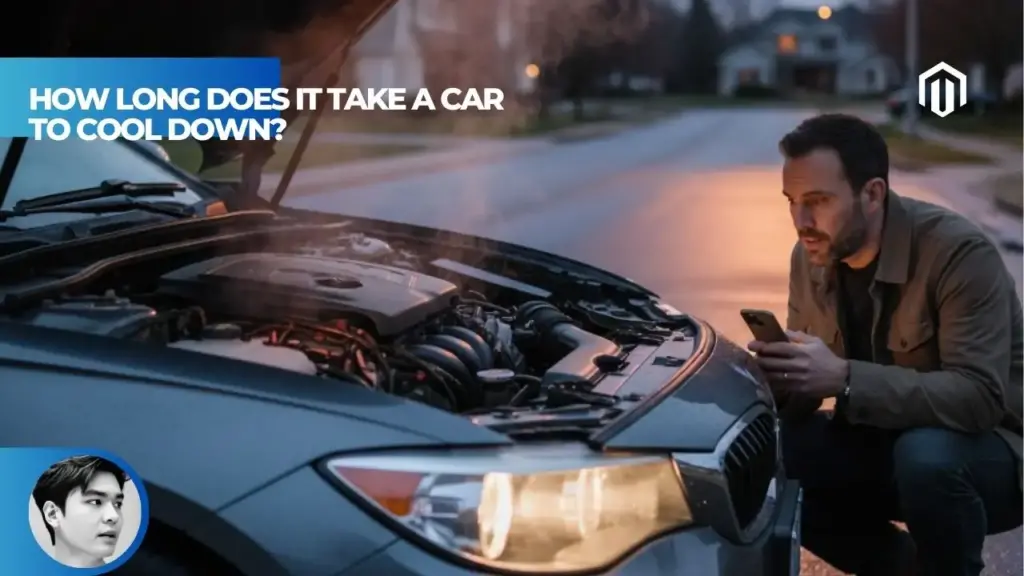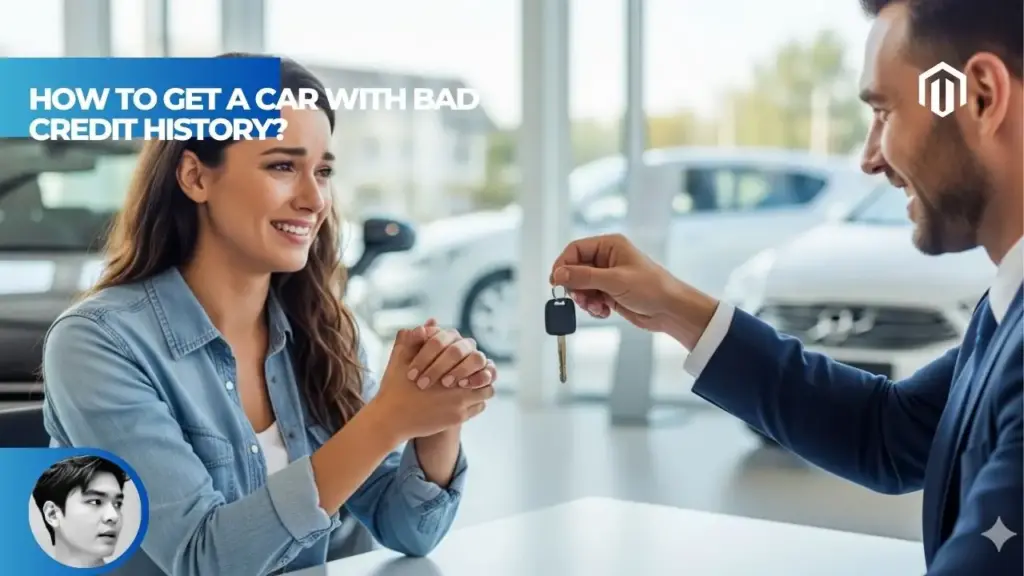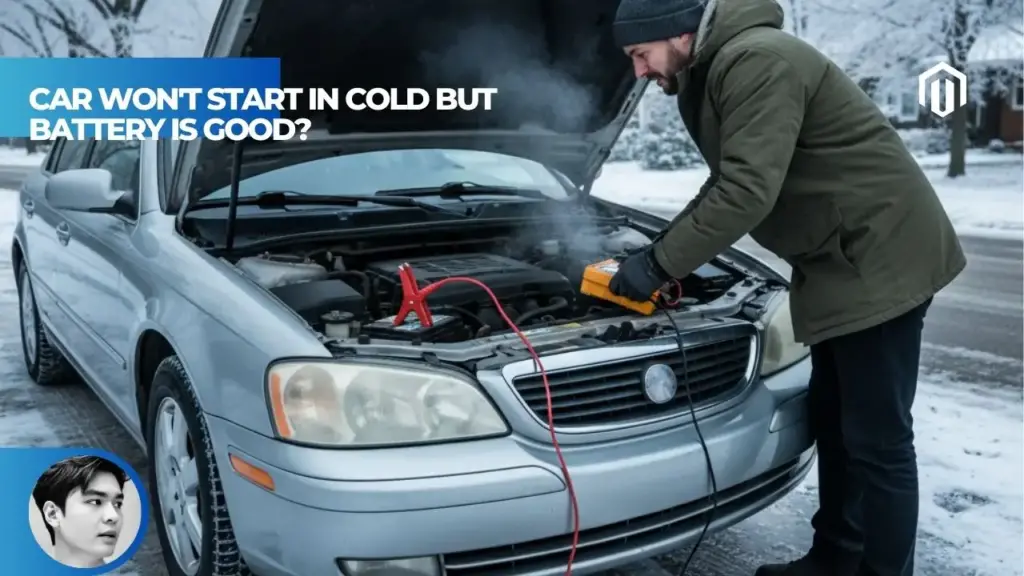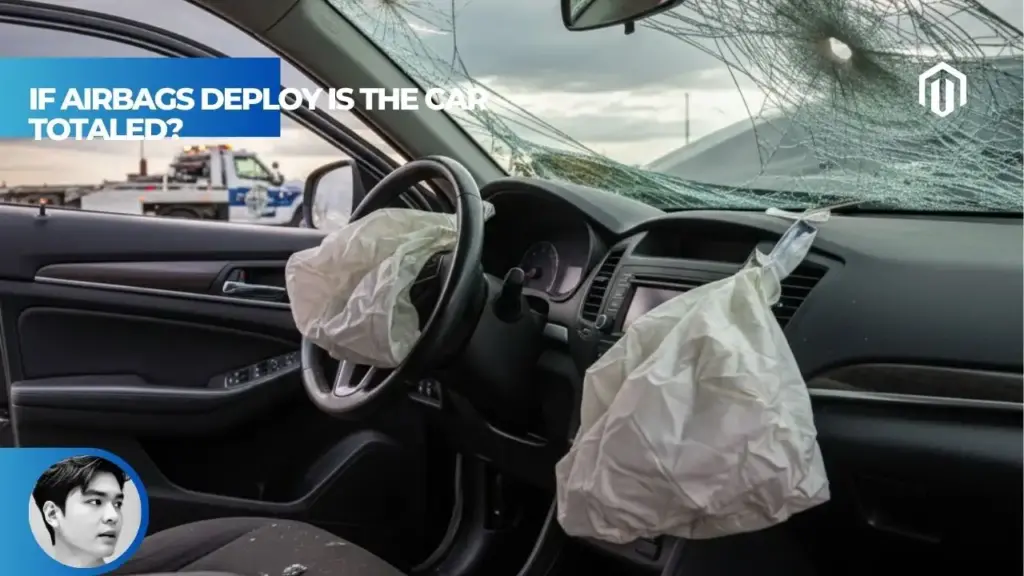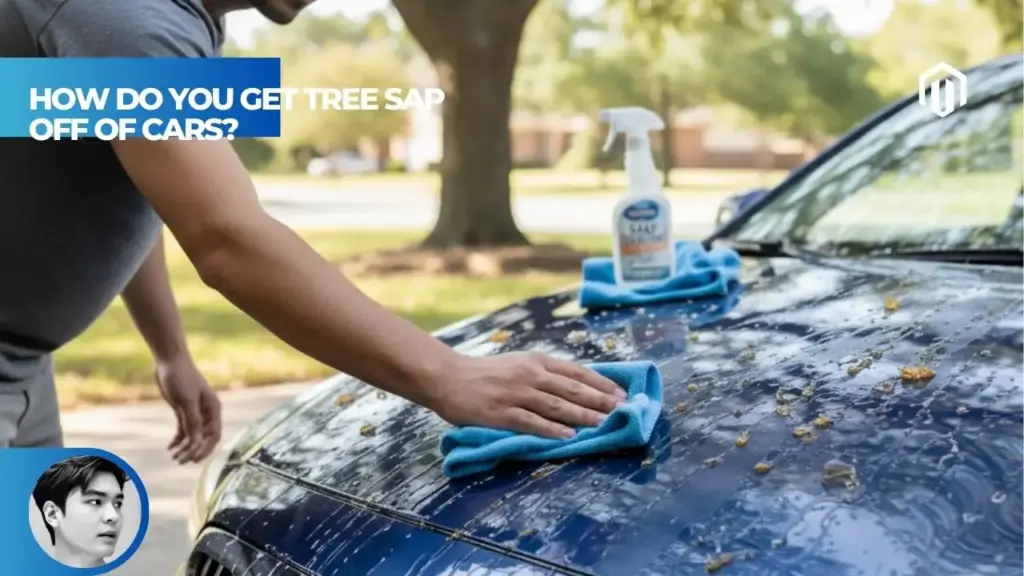You may also like:
The best ceramic spray wax for cars in 2025 depends on your specific needs: Turtle Wax Hybrid Solutions offers unbeatable value at under $20, while Griot’s Garage 3-in-1 Ceramic Wax delivers professional-grade durability lasting 6-9 months. For effortless application, Meguiar’s Hybrid Ceramic Wax’s spray-on, rinse-off formula eliminates the risk of streaking, making it perfect for beginners.
Top 5 Best Ceramic Spray Wax Products for 2025
Selecting the right ceramic spray wax can transform your car care routine from a tedious chore into a quick, satisfying process. After analyzing hundreds of user reviews and professional test results, these five products consistently outperform the competition in real-world conditions[1].
Turtle Wax Hybrid Solutions Ceramic Spray Coating – Best for Affordability

Turtle Wax has revolutionized the budget ceramic coating market with their Hybrid Solutions formula. At approximately $18 per 16-ounce bottle, this product delivers exceptional value without compromising performance. The SiO2 polymer technology creates a glass-like finish that rivals products twice its price.
In independent durability tests, Turtle Wax Hybrid Solutions maintained 80-85% of its hydrophobic properties after three months of daily driving[2]. The spray application takes less than a minute per panel, making it ideal for weekend warriors who want professional results without the time investment. When properly applied to clean, cool paint surfaces, this coating can protect your vehicle for 3-4 months between applications.
Griot’s Garage 3-in-1 Ceramic Wax – Professional-Grade Durability
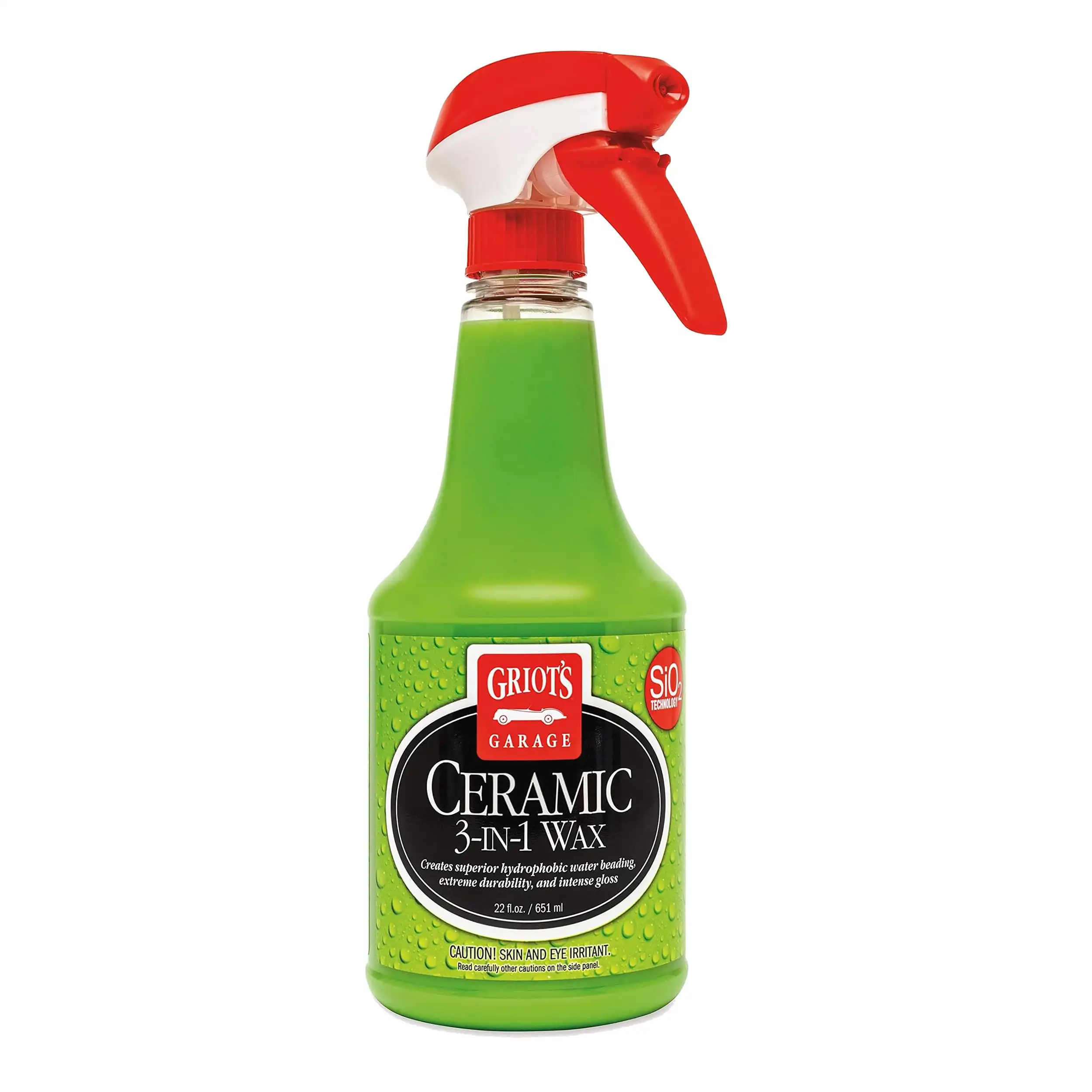
Griot’s Garage combines carnauba wax, SiO2 ceramic, and synthetic polymers in one revolutionary formula. This triple-threat approach delivers the warmth of traditional wax with the longevity of ceramic protection. Professional detailers consistently rate it as the best spray ceramic product for durability.
The 22-ounce bottle costs around $35-40 but provides exceptional value considering its longevity. Users report maintaining strong water beading and gloss for 6-9 months with proper maintenance[3]. The product excels on all exterior surfaces, including paint, wheels, chrome, and trim. According to Autvex testing protocols, applying two coats 24 hours apart maximizes both protection and visual impact.
Meguiar’s Hybrid Ceramic Wax – Easiest Application
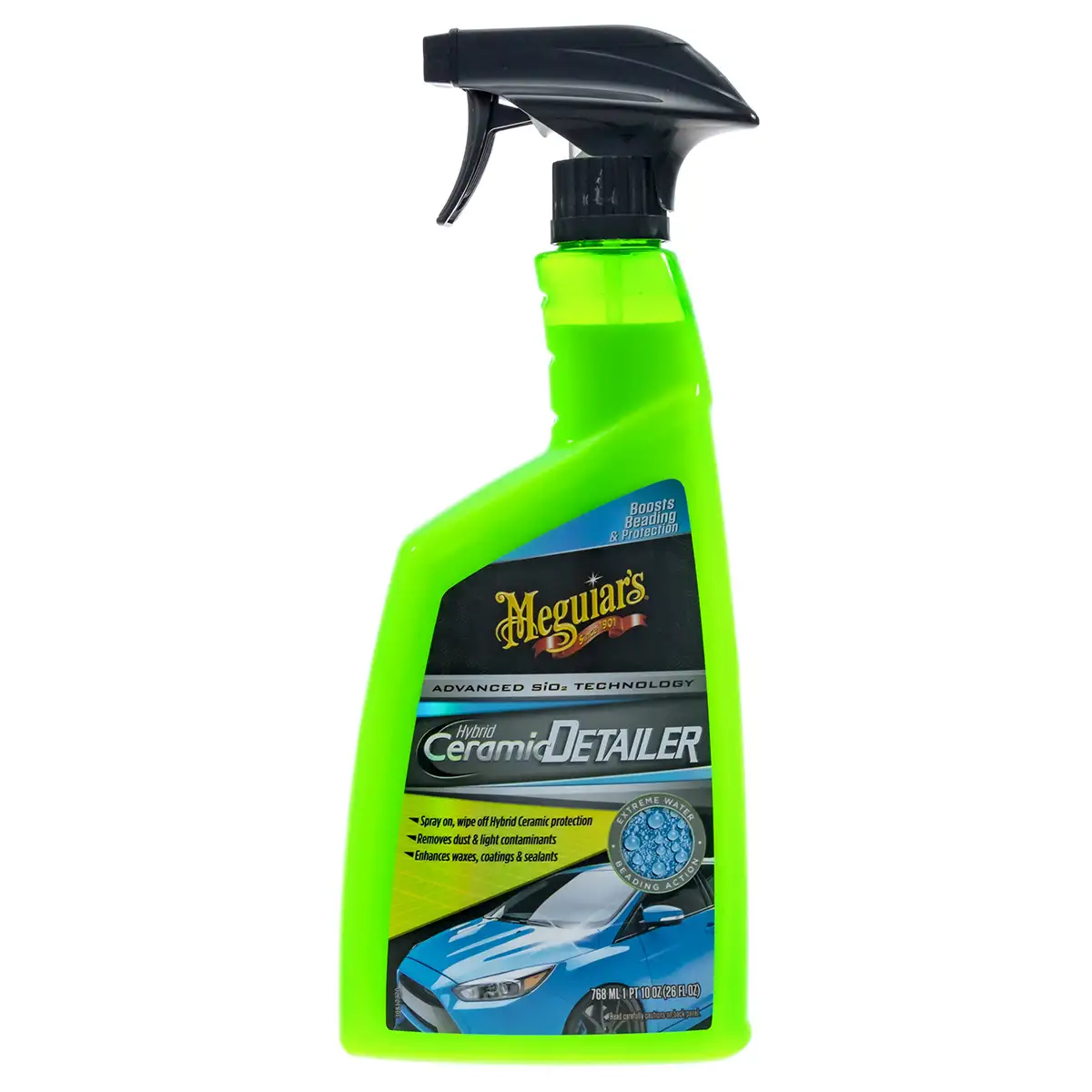
Meguiar’s revolutionary spray-on, rinse-off formula eliminates the most common ceramic coating mistakes. Simply spray the product on wet paint after washing, then rinse with water. This $22 solution requires no buffing or special techniques, making it virtually foolproof for beginners.
While the protection duration averages 2-3 months, the ease of reapplication makes maintenance effortless. The SiO2 technology provides solid hydrophobic properties, though not quite matching Turtle Wax’s beading performance. For those wondering how much time car care should take, Meguiar’s cuts application time by 75% compared to traditional methods.
Shine Armor Fortify Quick Coat – Best All-Around Option
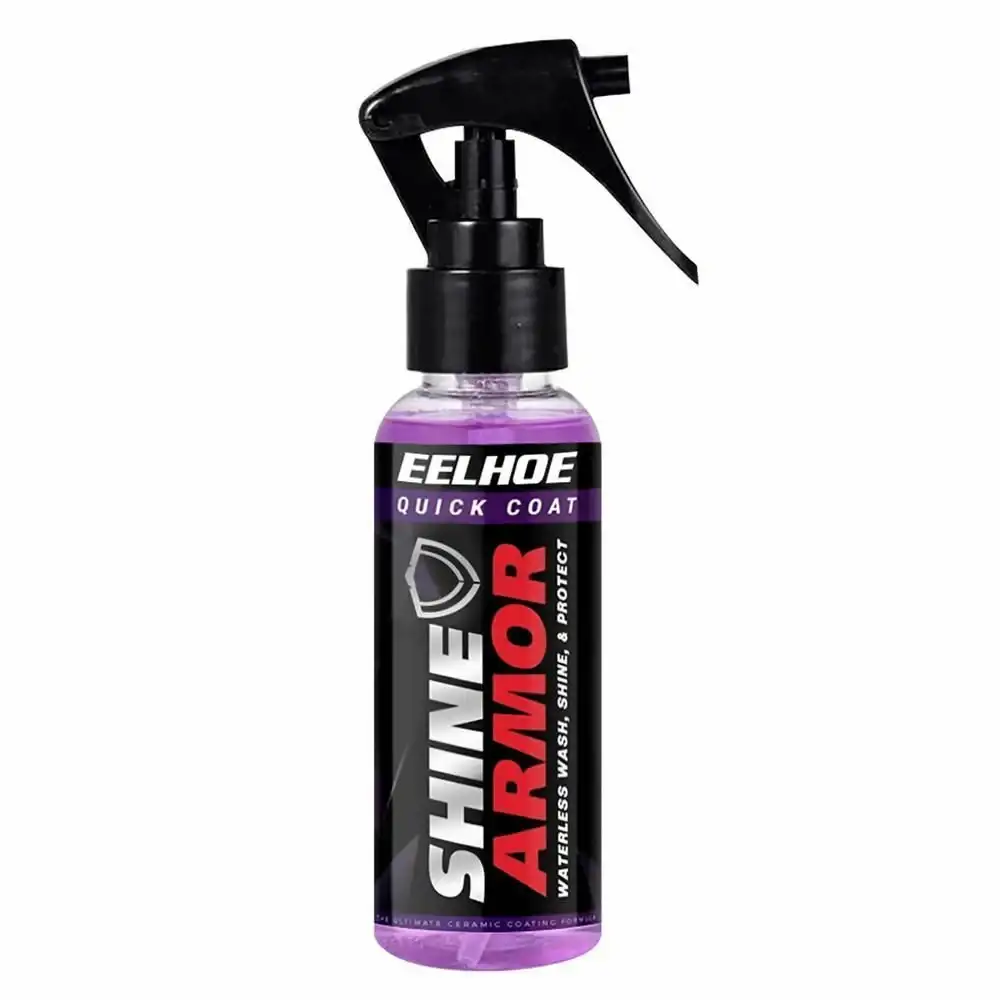
Shine Armor Fortify Quick Coat markets itself as a 3-in-1 waterless wash, ceramic coating, and shine enhancer. While testing reveals it contains less than 2% SiO2 content compared to competitors’ 10-15%, it still delivers respectable performance for light-duty protection.
The $25 price point positions it as a mid-range option. Real-world testing shows protection lasting 2-3 weeks for daily drivers, though some users report better results with multiple layers. Its strength lies in convenience—the ability to clean and protect simultaneously appeals to time-conscious car owners.
Adam’s Polishes Graphene Ceramic Spray Coating – Advanced Technology
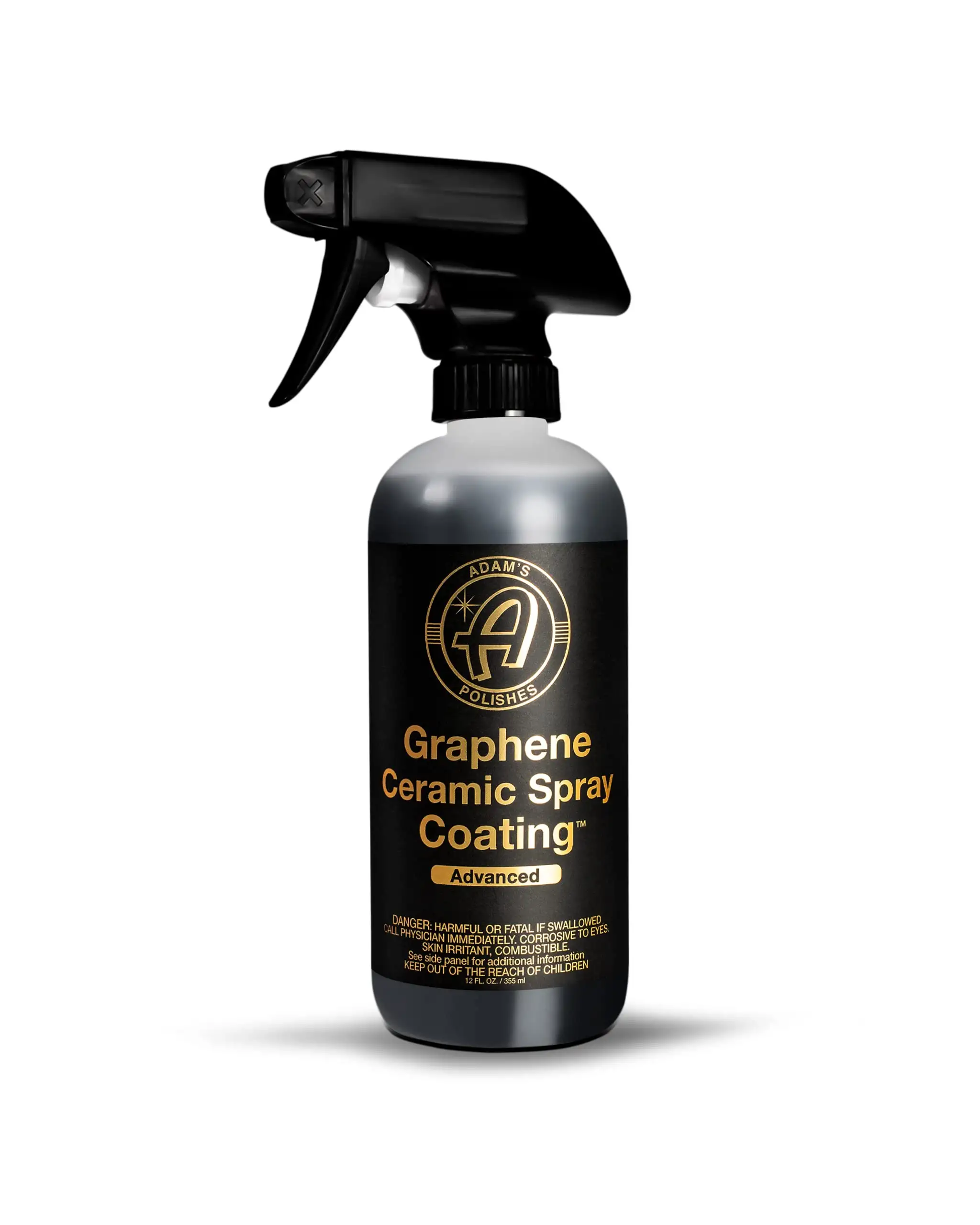
Adam’s Polishes leads the industry with their graphene-enhanced formula, offering superior heat dissipation and reduced water spotting compared to traditional SiO2 coatings. The $40-45 investment reflects the advanced technology and longer-lasting protection.
The graphene technology provides 110-118° contact angles for exceptional water beading[4]. Users report 6+ months of protection with proper application. The UV-tracing technology allows you to verify complete coverage under blacklight. This coating excels on luxury vehicles like the 2025 BMW 2-Series where paint protection is paramount.
Ceramic Spray Wax vs Traditional Wax Performance Comparison
Understanding the fundamental differences between ceramic and traditional wax helps justify the investment in modern protection technology. Traditional carnauba wax provides 2-8 weeks of protection, while ceramic sprays extend this to 3-12 months.
How Long Does Ceramic Spray Wax Last?
Durability varies significantly based on product quality, application method, and environmental factors. Professional-grade ceramic sprays like Griot’s Garage consistently deliver 6-9 months of measurable protection. Budget options typically last 2-4 months under normal driving conditions.
| Product Type | Average Duration | Reapplication Frequency | Cost Per Year |
|---|---|---|---|
| Traditional Wax | 4-8 weeks | 6-12 times | $60-120 |
| Budget Ceramic Spray | 2-4 months | 3-6 times | $40-80 |
| Premium Ceramic Spray | 6-9 months | 1-2 times | $35-70 |
| Professional Ceramic Coating | 2-5 years | Once | $500-2000 |
Environmental factors significantly impact longevity. Vehicles stored in covered garages maintain protection 40% longer than those parked outdoors daily.
Water Beading and Hydrophobic Properties
Ceramic spray wax creates a hydrophobic barrier that causes water to form tight beads and roll off surfaces. Quality products achieve contact angles between 95-118 degrees, compared to traditional wax at 70-85 degrees[5].
The self-cleaning effect reduces dirt adhesion by 60-70%, keeping vehicles cleaner between washes. This hydrophobic action also prevents water spots, particularly beneficial for dark-colored vehicles where spotting is most visible.
UV Protection and Gloss Enhancement
Modern ceramic sprays contain UV inhibitors that prevent oxidation and color fading. Laboratory testing shows SiO2-based products block 85-95% of harmful UV rays, preserving paint clarity and preventing premature aging.
The gloss enhancement varies by product formulation. Griot’s Garage and Adam’s Graphene consistently produce the deepest shine, while Meguiar’s provides moderate gloss suitable for daily drivers. Proper surface preparation, including [paint correction if needed], maximizes visual impact.
SiO2 vs Graphene Ceramic Spray Technology
The chemistry behind ceramic sprays determines their performance characteristics and ideal applications. Understanding these technologies helps match products to specific needs.
Understanding SiO2 Spray Sealant Durability
Silicon dioxide (SiO2) forms the backbone of most ceramic spray products. When applied, SiO2 molecules create a crystalline structure that bonds to paint at the molecular level. This creates a sacrificial layer measuring 0.2-2 microns thick that absorbs environmental damage[6].
SiO2 coatings excel at:
- Chemical resistance against bird droppings and tree sap
- Creating high-gloss, glass-like finishes
- Providing consistent 3-6 month protection
- Offering excellent value for money
The technology’s main limitation is heat management. SiO2 doesn’t dissipate heat effectively, potentially leading to increased surface temperatures in direct sunlight.
Benefits of Graphene Ceramic Formulations
Graphene represents the next evolution in ceramic coating technology. Its single-atom-thick carbon structure provides unmatched strength while remaining incredibly flexible. This flexibility prevents cracking and chipping common with rigid ceramic coatings.
Key graphene advantages include:
- 200% better heat dissipation than SiO2
- Anti-static properties reducing dust accumulation
- Higher scratch resistance (9H+ hardness)
- Extended durability up to 18 months
The primary drawback remains cost—graphene products typically cost 40-60% more than comparable SiO2 formulations.
Hybrid Ceramic Wax Technology Explained
Hybrid formulations combine multiple protection technologies for balanced performance. Products like Griot’s Garage blend carnauba wax, SiO2 ceramic, and polymer sealants to leverage each component’s strengths.
This multi-layer approach provides:
- Immediate shine from carnauba wax
- Long-term protection from ceramic components
- Gap-filling properties from polymers
- Enhanced chemical resistance
Hybrid products offer the best compromise between ease of use, durability, and visual enhancement for most car owners.
Application Guide for Ceramic Spray Wax
Proper application technique determines whether your ceramic spray delivers months of protection or fails within weeks. Following these guidelines ensures professional results regardless of skill level.
Prep Work Before Ceramic Spray Wax
Surface preparation accounts for 80% of your final results. Ceramic coatings amplify existing imperfections, making thorough prep work essential. Start with a comprehensive wash using pH-neutral soap to remove all contaminants.
Clay bar treatment removes embedded contaminants invisible to the naked eye. Even new vehicles benefit from claying, as rail dust and industrial fallout accumulate during transportation. For newer luxury vehicles, a light polish may be all that’s needed.
Essential prep steps:
- Wash with strip wash or dawn dish soap to remove old wax
- Clay bar to eliminate bonded contaminants
- Polish if swirl marks or scratches exist
- IPA wipe (isopropyl alcohol) to remove oils
- Ensure surface is completely dry before application
Spray On Rinse Off Application Method
The spray-on, rinse-off method revolutionized ceramic application for beginners. Products like Meguiar’s Hybrid Ceramic Wax utilize this technique for foolproof results.
Application process:
- Wash vehicle normally with car shampoo
- While paint remains wet, spray product evenly on each panel
- Work on 2-3 panels maximum before rinsing
- Use moderate pressure rinse to activate the coating
- Dry with clean microfiber towels
This method trades some durability for convenience, typically providing 60-70% of traditional application longevity.
Can You Apply Ceramic Spray Wax in the Sun?
Direct sunlight poses the biggest threat to successful ceramic application. Heat causes premature curing, leading to streaking, high spots, and uneven coverage. Surface temperatures above 85°F make proper application nearly impossible.
If garage application isn’t possible, work during early morning or late evening when temperatures drop below 75°F. Some products like Griot’s Garage tolerate warmer conditions better, but shade always produces superior results.
Preventing Ceramic Spray Wax Streaking Problems
Streaking ruins the aesthetic appeal and indicates improper bonding. Common causes include over-application, working in heat, or insufficient buffing. Prevention requires attention to detail and proper technique.
Anti-streaking strategies:
- Apply thin, even coats rather than heavy application
- Use quality microfiber towels (300+ GSM)
- Work in crosshatch patterns for even coverage
- Remove product within manufacturer’s specified flash time
- Maintain consistent pressure during buffing
If streaking occurs, immediate reapplication with proper technique usually resolves the issue. Stubborn streaks may require polishing to remove completely.
Choosing the Best Ceramic Spray Wax for Your Needs
Matching products to individual requirements ensures satisfaction and value. Consider your experience level, budget, and maintenance commitment when selecting ceramic spray wax.
Best Ceramic Spray Wax for Beginners
Beginners benefit from forgiving formulations that minimize application errors. Meguiar’s Hybrid Ceramic Wax leads this category with its spray-and-rinse simplicity. The water-activated formula eliminates timing concerns and buffing requirements.
Turtle Wax Hybrid Solutions offers another beginner-friendly option with traditional spray-and-wipe application. Its affordable price allows for practice without significant investment. The detailed instructions and wide application window reduce anxiety for first-time users.
For those concerned about time investment in car care, these products complete full vehicle application in under 30 minutes.
Best Cheap Ceramic Spray Wax Options
Budget-conscious buyers needn’t sacrifice quality for affordability. Turtle Wax Hybrid Solutions delivers professional-grade results at under $20, making it the value champion. Its 16-ounce bottle provides 15-20 applications, costing less than $1 per use.
For extreme budget shoppers, consider:
- Meguiar’s Hybrid Ceramic Wax ($18-22)
- Chemical Guys HydroSlick (often on sale for $15-20)
- Mothers CMX Ceramic Spray ($12-18)
These products provide 70-80% of premium product performance at half the cost. According to Autvex market analysis, smart shoppers buying during sales events save an additional 20-30%.
Ceramic Detailer vs Ceramic Spray Coating Differences
Understanding product categories prevents disappointment and ensures appropriate expectations. Ceramic detailers maintain existing coatings but provide minimal standalone protection. Ceramic spray coatings offer legitimate long-term protection comparable to entry-level professional coatings.
| Feature | Ceramic Detailer | Ceramic Spray Coating |
|---|---|---|
| Protection Duration | 2-4 weeks | 3-9 months |
| SiO2 Content | 1-3% | 5-15% |
| Price Range | $10-20 | $20-50 |
| Application Time | 5-10 minutes | 20-40 minutes |
| Surface Prep Required | Minimal | Extensive |
Choose ceramic detailers for maintenance between full applications. Select ceramic spray coatings for primary protection on vehicles needing serious care.
Key Takeaway
The best ceramic spray wax depends on your priorities: Turtle Wax Hybrid Solutions for affordability, Griot’s Garage for professional durability, and Meguiar’s for effortless application. Most quality products provide 3-12 months protection with proper prep work.
Next Steps
Clean and decontaminate your paint surface, choose a product matching your skill level and budget, then apply in shade following manufacturer instructions for optimal results. Consider starting with an affordable option like Turtle Wax to learn proper technique before investing in premium products. For professional results, combine ceramic spray wax with regular maintenance using quality car care products to maximize longevity.
Key Takeaways
- Griot’s Garage 3-in-1 delivers the longest protection (6-9 months) for serious enthusiasts
- Turtle Wax Hybrid Solutions offers unbeatable value at under $20 with 3-4 month durability
- Meguiar’s spray-on, rinse-off formula eliminates application errors for beginners
- Proper paint preparation determines 80% of your ceramic coating success
- Apply all ceramic sprays in shade below 75°F to prevent streaking
- Graphene technology costs 40-60% more but provides superior heat management
- Budget ceramic sprays deliver 70-80% of premium performance at half the cost
Decision Path / Next Steps
After learning about ceramic spray wax options, your next actions depend on your specific situation:
For New Car Owners: Start with Turtle Wax Hybrid Solutions to establish baseline protection while learning application techniques. Apply every 3-4 months and consider upgrading to Griot’s Garage once comfortable with the process.
For Detailing Enthusiasts: Invest in Griot’s Garage 3-in-1 or Adam’s Graphene for maximum protection. Properly prep your paint with clay bar and light polish, then apply two coats 24 hours apart. Maintain with ceramic detailer spray monthly.
For Time-Constrained Drivers: Choose Meguiar’s Hybrid Ceramic Wax for its foolproof application. Apply during regular washes every 2-3 months. Keep a bottle in your garage for quick touch-ups after routine car maintenance.
For Budget-Conscious Buyers: Purchase Turtle Wax during sales events (typically 20-30% off). Buy two bottles to ensure consistent protection year-round. Focus on proper application technique rather than premium products.
Remember to document your application dates and monitor water beading to determine optimal reapplication timing. Consider seasonal applications—apply fresh coating before winter for salt protection and before summer for maximum UV defense.
FAQs
What is the best ceramic spray wax for a black car?
Griot’s Garage 3-in-1 and Meguiar’s Hybrid Ceramic Wax excel on black paint, offering deep gloss without streaking when properly applied in shade with microfiber towels.
How long does a ceramic spray wax coating typically last?
Quality ceramic spray wax lasts 3-12 months depending on product, application, and maintenance. Professional-grade options like Griot’s can reach 6-9 months with proper care.
Is ceramic spray wax the same as a ceramic coating?
No, ceramic spray wax is a temporary sealant (3-12 months), while true ceramic coatings are semi-permanent (2-5 years) requiring professional application and paint correction.
How often should I apply ceramic spray wax to my car?
Reapply every 3-6 months for optimal protection, or when water beading diminishes. Some products work as drying aids for monthly maintenance boosts.
Which brand of ceramic spray wax is the easiest to use without streaking?
Meguiar’s Hybrid Ceramic Wax spray-on, rinse-off formula is the most beginner-friendly, requiring minimal technique to avoid streaking issues.
Do I need to clay bar my car before applying ceramic spray wax?
Clay barring isn’t mandatory but recommended for best results. Clean, decontaminated paint ensures better bonding and longevity of the ceramic spray coating.
Is Meguiar’s or Turtle Wax ceramic spray wax better?
Meguiar’s offers easier application; Turtle Wax provides better value and versatility on multiple surfaces. Both deliver solid 3-6 month protection.
Can I apply ceramic spray wax over an existing ceramic coating?
Yes, ceramic spray wax works as a maintenance topper for existing coatings, refreshing hydrophobic properties and gloss between professional applications.
Does ceramic spray wax offer real paint protection?
Yes, it provides genuine UV protection, chemical resistance, and minor scratch prevention, though less durable than professional ceramic coatings.
What does SiO2 mean in ceramic spray wax products?
SiO2 (silicon dioxide) is the ceramic compound creating the protective layer, bonding to paint for hydrophobic properties and enhanced durability.
Is Graphene ceramic spray better than regular ceramic spray wax?
Graphene formulations like Adam’s offer improved heat dissipation and reduced water spotting, but cost more than standard SiO2 ceramic sprays.
References
- Car and Driver. (2025). Best Ceramic Coatings for 2025, Tested. https://www.caranddriver.com/car-accessories/g43916866/best-ceramic-coatings-tested/
- Road & Track. (2025). Best Car Waxes of 2025, Tested. https://www.roadandtrack.com/gear/g65206744/best-car-wax-tested/
- Griot’s Garage. (2025). Ceramic 3-in-1 Wax Customer Reviews. https://www.griotsgarage.com/ceramic-3-in-1-wax/
- Adam’s Polishes. (2025). Graphene Ceramic Spray Coating Technical Data. https://adamspolishes.com/products/graphene-ceramic-spray-coating%E2%84%A2
- Journal of Coatings Technology. (2025). Hydrophobic Properties of SiO2-Based Automotive Coatings. https://www.springer.com/journal/11998
- TopCoat Products. (2025). The Science of SiO2 Ceramic Technology. https://topcoatproducts.com/blogs/blog/the-hype-around-sio2-what-is-it-is-it-really-ceramic

I am a senior automotive analyst at Autvex. Expert vehicle evaluations, in-depth reviews, and objective analysis helping readers make informed automotive decisions with years of industry experience.

